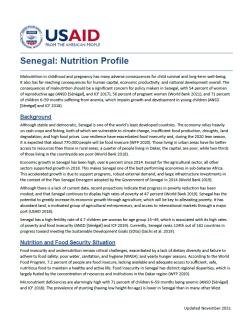Although stable and democratic, Senegal is one of the world’s least developed countries. The economy relies heavily on cash crops and fishing, both of which are vulnerable to climate change, insufficient food production, droughts, land degradation, and high food prices. Low resilience have exacerbated food insecurity and, during the 2020 lean season, it is expected that about 770,000 people will be food insecure (WFP 2020). Those living in urban areas have far better access to resources than those in rural areas; a quarter of people living in Dakar, the capital, are poor, while two-thirds of those living in the countryside are poor (World Bank 2018).
Economic growth in Senegal has been high, over 6 percent since 2014. Except for the agricultural sector, all other sectors supported growth in 2018. This makes Senegal one of the best performing economies in sub-Saharan Africa. This accelerated growth is due to support programs, robust external demand, and large infrastructure investments in the context of the Plan Senegal Emergent adopted by the Government of Senegal in 2014 (World Bank 2019).
Although there is a lack of current data, recent projections indicate that progress in poverty reduction has been modest, and that Senegal continues to display high rates of poverty at 47 percent (World Bank 2019). Senegal has the potential to greatly increase its economic growth through agriculture, which will be key to alleviating poverty. It has abundant land, a motivated group of agricultural entrepreneurs, and access to international markets through a major port (USAID 2018).
Senegal has a high fertility rate of 4.7 children per woman for age group 15–49, which is associated with its high rates of poverty and food insecurity (ANSD [Sénégal] and ICF 2019). Currently, Senegal ranks 124th out of 162 countries in progress toward meeting the Sustainable Development Goals (SDGs) (Sachs et al. 2019).

